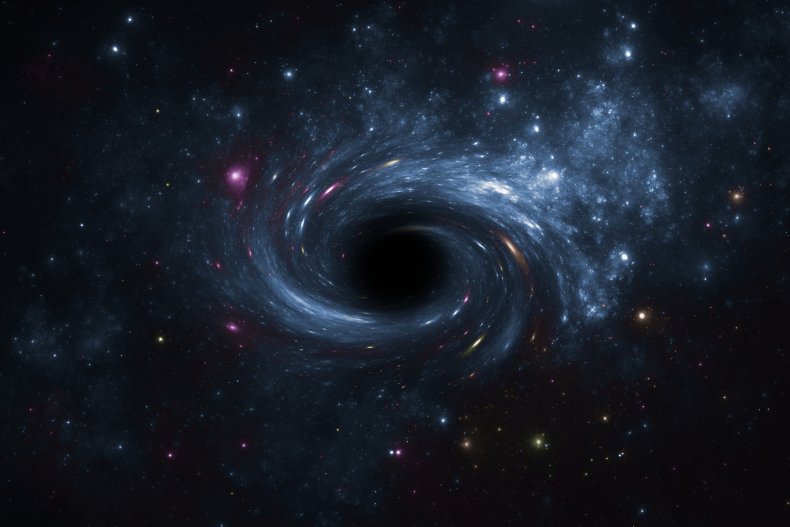What Happens if a Black Hole Comes to Earth
On March 29, a Reddit user posted an animation of what they claimed was a recreation of what would happen if a penny-sized black hole landed on Earth.
It was later found to be fake because the animation was actually stock CGI footage of the Earth being destroyed without any black hole modeling, but not before the post had amassed over 5,000 comments and over 60,000 upvotes. The footage can be seen below.
If a penny-sized black hole did form on Earth, the planet would indeed be destroyed killing everyone on it, but the process would likely be different than in the video above.
A penny-sized black hole would have roughly the same mass as the Earth for reasons explained later.
Frank Heile, a particle physicist at the University of Stanford, has previously provided insight into what would happen if a penny-sized black hole appeared at the Earth's core. The Earth wouldn't just collapse in, he said, because of outward pressure and the fact the planet is spinning.
He pointed out black holes are destructive not just due to their mass but also due to the intense heat and radiation they give out, and this could cause some of the Earth to be blown into space rather than sucked into the black hole.
He wrote on Quora: "When the matter near the black hole begins to fall into the black hole, it will be compressed to a very high density that will cause it to be heated to very high temperatures. These high temperatures will cause gamma rays, X-rays, and other radiation to heat up the other matter falling into the black hole.
"The net effect will be that there will be a strong outward pressure on the outer layers of the Earth that will first slow down their fall and will eventually ionize and push the outer layers away from the black hole."
Secondly, he said, mass falling towards a black hole will begin spinning around the black hole at an increasingly fast rate, similar to how an ice skater spins faster when they pull in their arms. This would cause whatever is left of the Earth to essentially orbit the black hole.
"This angular momentum will tend to slow down the fall into the black hole and will eventually result in something like an accretion disc around the black hole," Heile wrote.
Theoretically if there was no spin or outward pressure to take into consideration, Heile said, it would take about 10 to 15 minutes for the entire Earth to fall into the black hole. In reality things would be more complicated.
In addition, since the penny-sized black hole on our planet would effectively double the mass of Earth, the orbits of all the planets in the entire solar system would be slightly affected.
Is it possible?
Theoretically yes, but practically it would be impossible to create a penny-sized black hole here on Earth. Forming a penny-sized black hole on Earth would take a huge amount of mass and a method of condensing that mass into a tiny area. In addition, the closest known black hole to Earth is 1,000 light-years away.
Black holes are thought to be incredibly destructive, packing huge amounts of mass into a point in space that is infinitely tiny. This point in space is enclosed in a sphere known as the event horizon, and anything crossing this sphere, including light, will never be able to escape.
The size of a black hole can be thought of in terms of the radius of its event horizon. Astrophysicists refer to this as the Schwarzschild radius, named after the German astronomer Karl Schwarzschild, who developed the modern idea of a black hole using Einstein's theories over a century ago.
Schwarzschild radii are not limited to black holes. Any object with mass, such as a planet, moon, or a human, has a Schwarzschild radius.
If an object's physical radius becomes smaller than its Schwarzschild radius this object will become a black hole. The Earth's Schwarzschild radius is thought to be around 8.7mm, or roughly 17.5mm in diameter.
A U.S. cent is around 19mm in diameter, so if someone were to shrink the Earth down to a little less than the size of a U.S. cent, it would become a black hole. This means that the theoretical black hole penny would have a little bit more mass than the Earth.
On the other end of the scale, some black holes are so big they are called "stupendously large black holes," or SLABS. One, TON 618, has the mass of 66 billion suns.

What Happens if a Black Hole Comes to Earth
Source: https://www.newsweek.com/penny-sized-black-hole-earth-what-would-happen-1579750